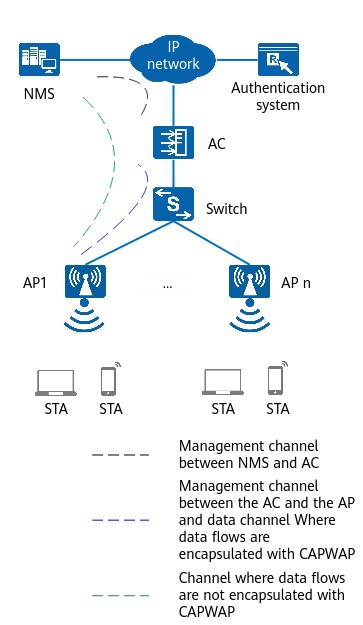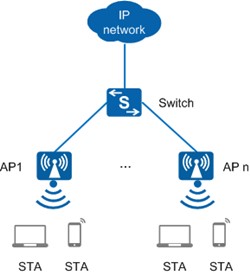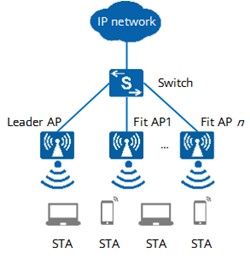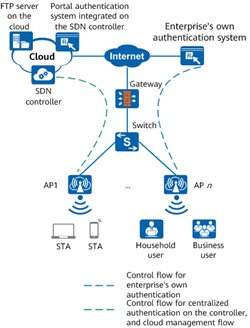
Install APs indoors
Application scenarios
Indoor APs generally support three working modes: fat AP, fit AP, and cloud AP, and can be flexibly switched between multiple modes according to network planning requirements.
Typical networking of FIT APs
Figure 1 shows the networking used by the device as a Fit AP. Functions such as user access, AP on-line, authentication, routing, AP management, security protocols, and QoS must be completed in conjunction with the AC.

Typical networking of FAT APs
When the device is used as a FAT AP, the networking is as shown in the application scenario and can independently complete functions such as user access, authentication, data security, service forwarding, and QoS.
Figure 2 Typical networking of a FAT AP

Starting from the V200R020C10 version, some APs in FAT mode also support leader AP networking (subject to specific specifications), which can manage a small number of FIT APs and implement small-scale batch deployment and simple O&M of basic WLAN services.
Figure 3 Leader AP networking

Typical networking of cloud APs
When used as a cloud AP, functions such as user access, AP on-line, authentication, routing, AP management, security protocols, and QoS must be completed in conjunction with the SDN controller in the cloud. Customers can use the Portal authentication server integrated in the SDN controller or the authentication server deployed by the enterprise itself.



